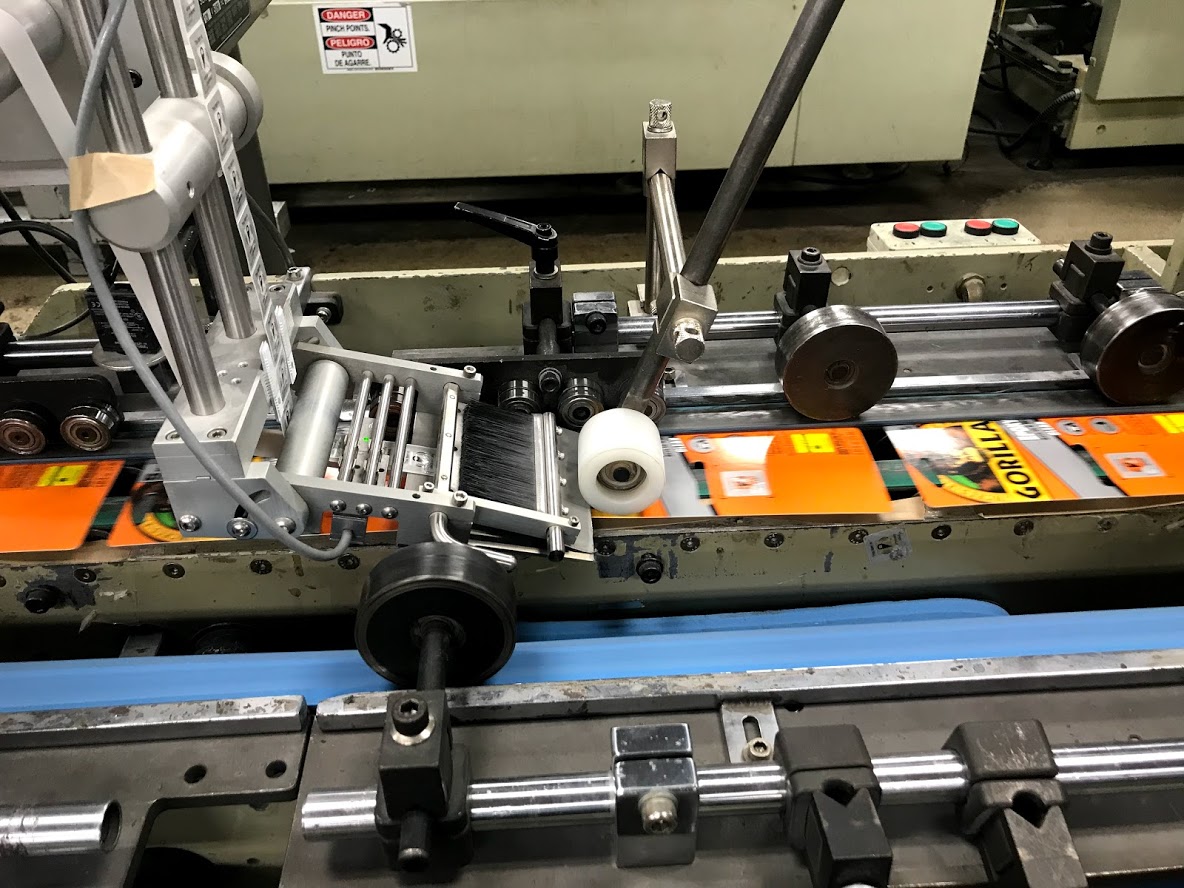Tagging products with EAS security labels is proven to reduce shrink[1] which in turn can lead to increased sales[2]. Some products are coming into retailer's stores already tagged. The benefits of source tagging are proven, and to maximize them retailers can expand the population of tagged products by implementing their own source tagging program.
What is source tagging and why should retailers be doing it?
Source tagging is the application of security labels at the point of manufacture. The further upstream in the supply chain the EAS labels can be applied the less cost impact there is on the products. Today’s retailers do not have excess store labels for the application of EAS labels in store. This labor is better spent with customer-facing activities.
Moving the tagging process away from stores to source provides consistent protection that meets compliance standards. By applying the label in a consistent place on the product, retailers increase their chances of providing an appealing customer experience. Brand and product integrity are not compromised by inconsistent and random EAS label applications.
Source tagging is ultimately about control. Controlling the type of tag applied, and where it is applied on the product. It also allows retailers to track, measure, and monitor products across the entire scope of their supply chain. Rather than waiting for the products to be delivered to the store or DC before they can be tagged, tagging them at source means that there are no gaps in supply chain visibility.
Checkpoint Systems, source tagging leaders
Checkpoint Systems is the global leader in providing retail merchandise protection solutions, with over 30 years driving retailers and brand owners source tagging programs.
We are a vertically integrated solution provider for retail, delivering intelligent solutions that bring clarity and efficiency to the retail environment anytime, anywhere. Our Micro EAS labels allow for product protection without interfering with a brand owner's brand aesthetics. We have the infrastructure and resources to work collaboratively with retailers to determine which of our security labels will work for optimal detection and deactivation in the Checkpoint EAS systems found in retail.

Why should retailers even tag in the first place?
Retailers have the technology at their fingertips to deter theft, reduce shrink, and improve on-shelf availability which in turn could mean increased inventory accuracy, and enhanced omnichannel. That technology is tagging. So why not use it and enjoy the benefits?
Accurate inventory forecasting and replenishment is a major challenge for retailers, achieved through better on-shelf availability. Most retailers replenish inventory based on point-of-sale data. Shoplifting completely undermines this system, leaving stores low on stock and the store unaware that they are about to run out. Empty shelves are a blight for retailers, damaging customer experience and negatively impacting customer loyalty.
Applying tags is a great response to this challenge. Yet doing so in-store has its drawbacks. Store labor is very valuable and best spent elsewhere, such as dealing with customer requests and generally improving the customer experience. Source tagging allows for the delivery of shelf-ready EAS-protected labels freeing up in-store labor for other tasks.
At Checkpoint, we are the industry leader in the application of EAS labels at source, making it a smooth process for the retailers. We currently manage over 1,000 brands facilitating source tagging. These brands represent over 10,000 items protected at source. The Checkpoint global team can support programs locally or at the point of manufacturer.
What should a retailer know before getting started?
Getting started doesn’t have to be a big deal. Checkpoint’s expert Source Tagging teams are on hand to guide retailers through the 5 steps to implementing a successful source tagging program are to use the data, collaborate, test, manage for the long term, and audit:
USING DATA
Analyzing available data is crucial before deciding to implement a Source Tagging program. This will enable retailers to make informed choices of what products are most at risk and should be selected for trial.
TEAM COLLABORATION
From factory staff to loss prevention managers to category managers team, collaboration and communication is essential to a successful project. Checkpoint has the resources globally and locally to support retailers at each step.
TESTING is KEY
Tags only work if they can be detected. Once tagged, a sample of products will be tested at Checkpoint’s laboratory to check whether the detection and deactivation is suitable for the stores in which they will be sold.
LONG-TERM SOLUTIONS
Once testing is complete, the source tagging program is ready to be rolled out.
A successful project is not a short-term solution. The ultimate objective should be that the program is easily scaled up to include all future product lines.
IN-STORE PRODUCT AUDIT
The source tagging program should deliver speed-to-shelf, helping to reduce out-of-stock scenarios and increase sales.
It’s important for the retailer to ensure compliance through regular checking of the source-tagged products arriving in store.
Checkpoint is here to help
As RF technology specialists, the Checkpoint source tagging team will support retailers on every step of their journey, ensuring two main objectives:
- The products will be delivered to the stores tagged according to the requirements defined by the retailer.
- The tagging will be easy for the manufacturer, ensuring that the original manufacturing process is impacted as little as possible.
As a global provider Checkpoint can provide the same advisory services wherever you are, including retailers with multinational supply chains. We ensure the same level of support and the same outstanding result. Use our experience and expertise to get the results that you are looking for from source tagging.
If you think that source tagging might be for you, contact your local Checkpoint representative here.
[1] Sidebottom, A., Thornton, A., Tompson, L. et al. A systematic review of tagging as a method to reduce theft in retail environments. Crime Sci 6, 7 (2017).
[2] CashTech, 6 Effects of Retail Shrinkage, March 2020
